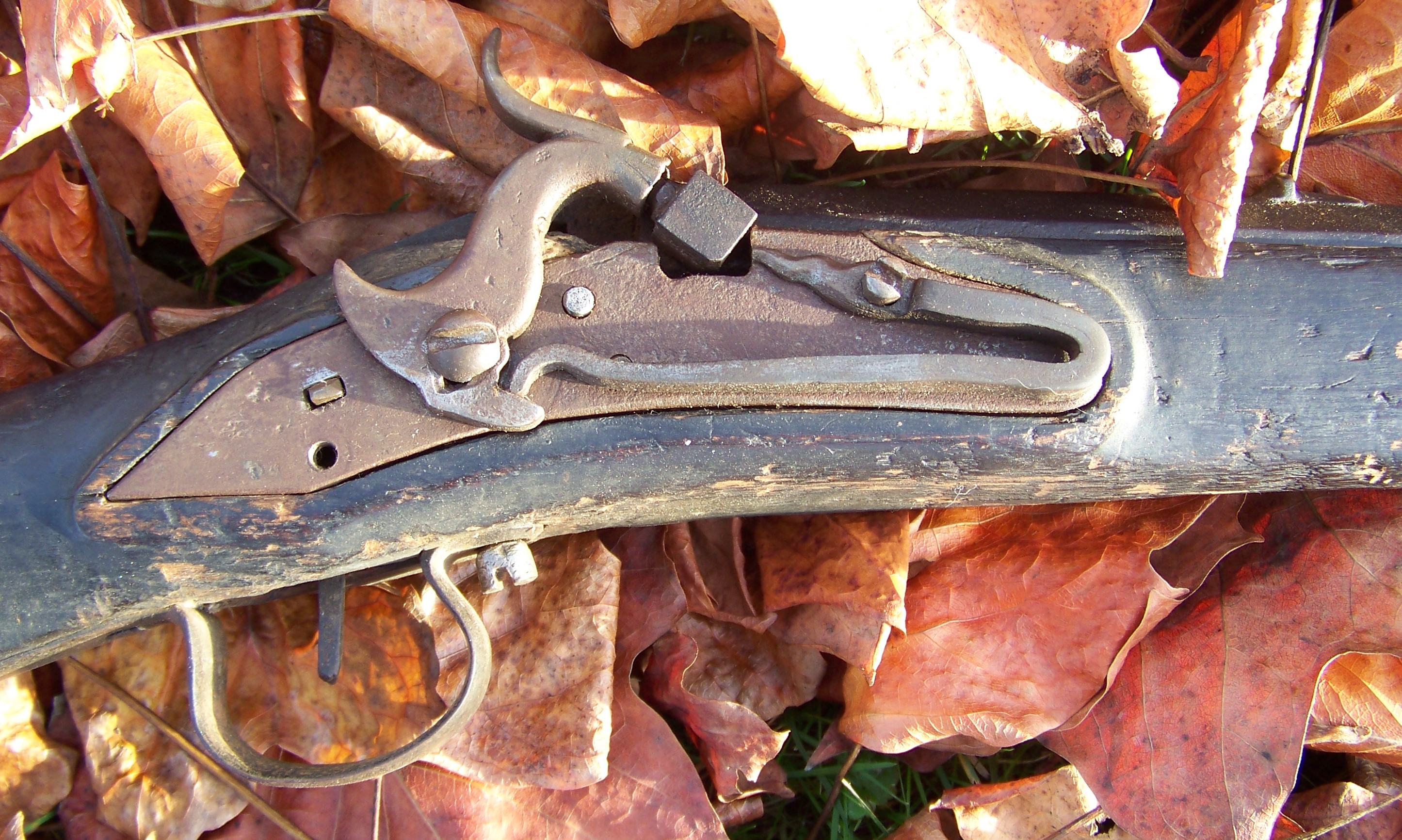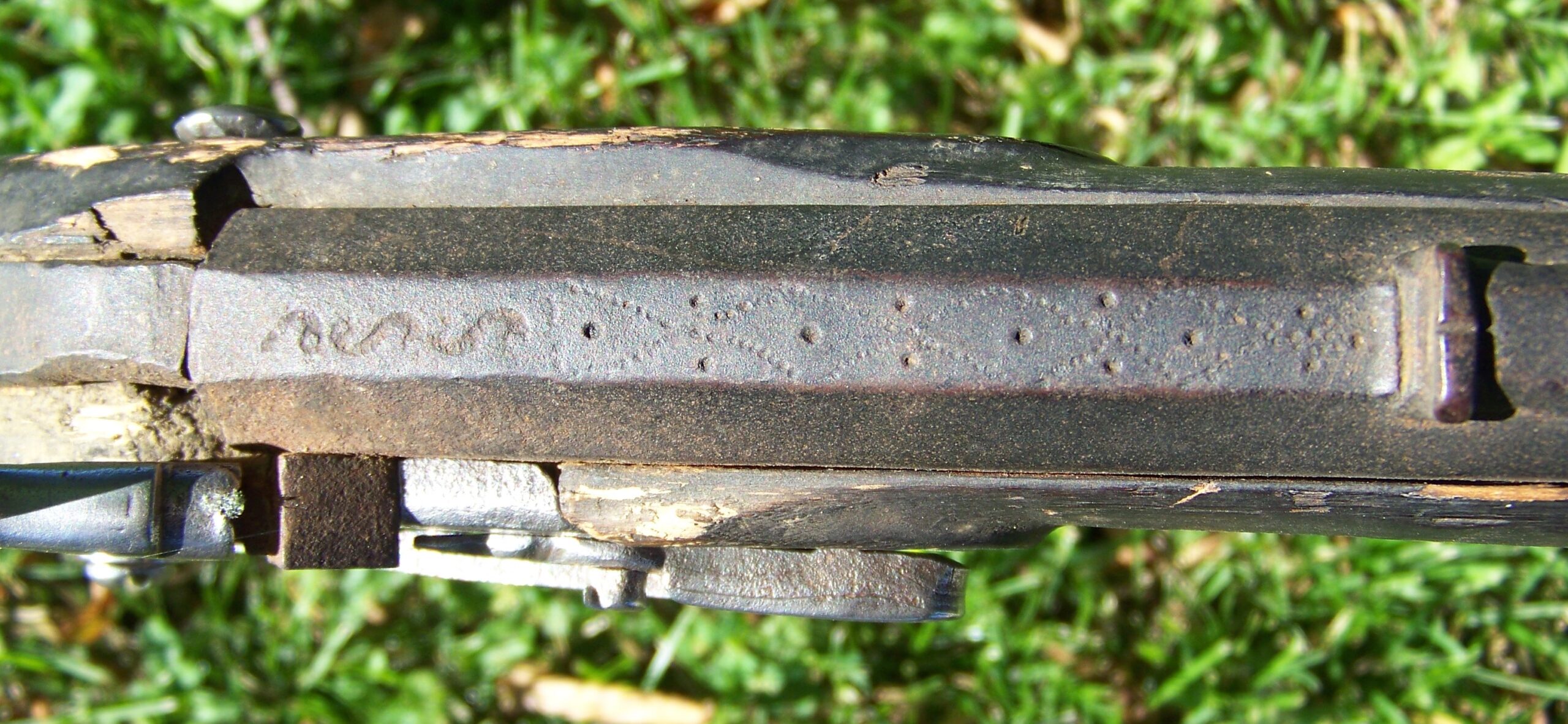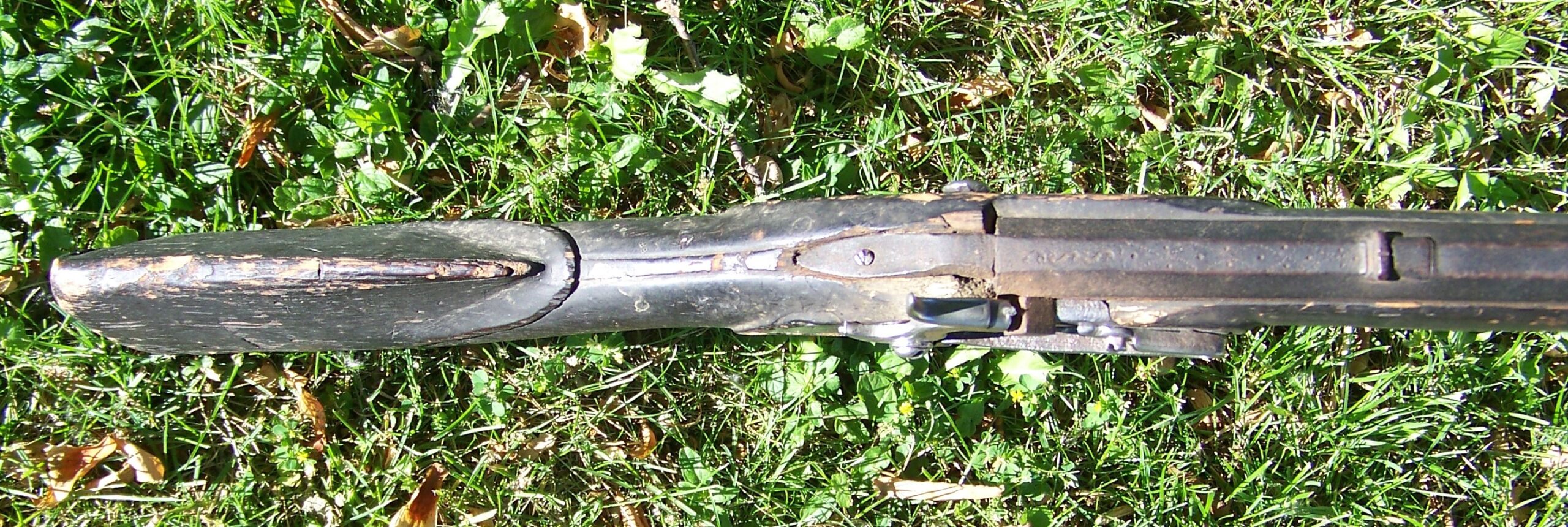Snaphaunce Guns
Compiled by Larry B. Schuknecht
Mr. Herbert J. Jackson in his 1923 book European Hand Firearms states that the Snaphaunce Lock was developed about the middle of the 16th Century and it is generally supposed to have emanated from Spain, but early examples are found that originated in Spain, Scotland and Germany. It followed and superseded the wheel-lock and a comparison of the two locks is appropriate here. The Wheel-Lock was a complicated Lock with several precision made parts. The rotating wheel was powered by a flat spring with a steel chain linkage. The Cock which held the flint simply rotated until the flint lay against the rotating wheel to create the spark when the trigger was pulled allowing the wheel it’s freedom to rotate.
The Snaphaunce had a cock which held the Flint that would rotate when the trigger was pulled, striking a steel frizzen which covered the pan in a movement that in principal is the same as the Flint Lock which is presumed to have originated in the first half of the 17th Century. Many of the Snaphaunce locks were very simple with an outside mainspring, a hammer which rotated on a screw and a lateral sear which pierced the lockplate to engage the hammer when it was cocked.
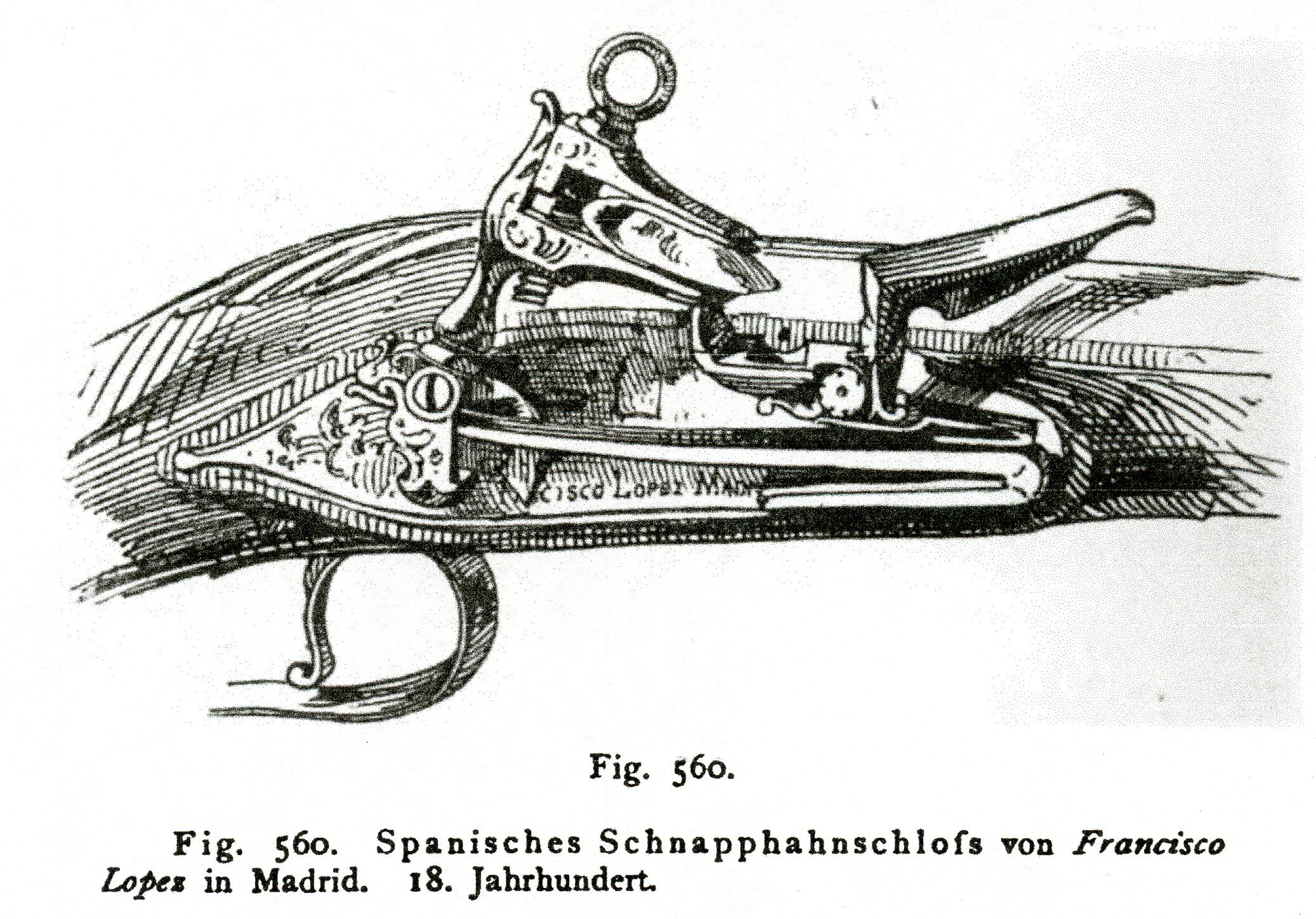

The following is from pages 120 and 121 of Claude Blair’s 1962 book European & American Arms.
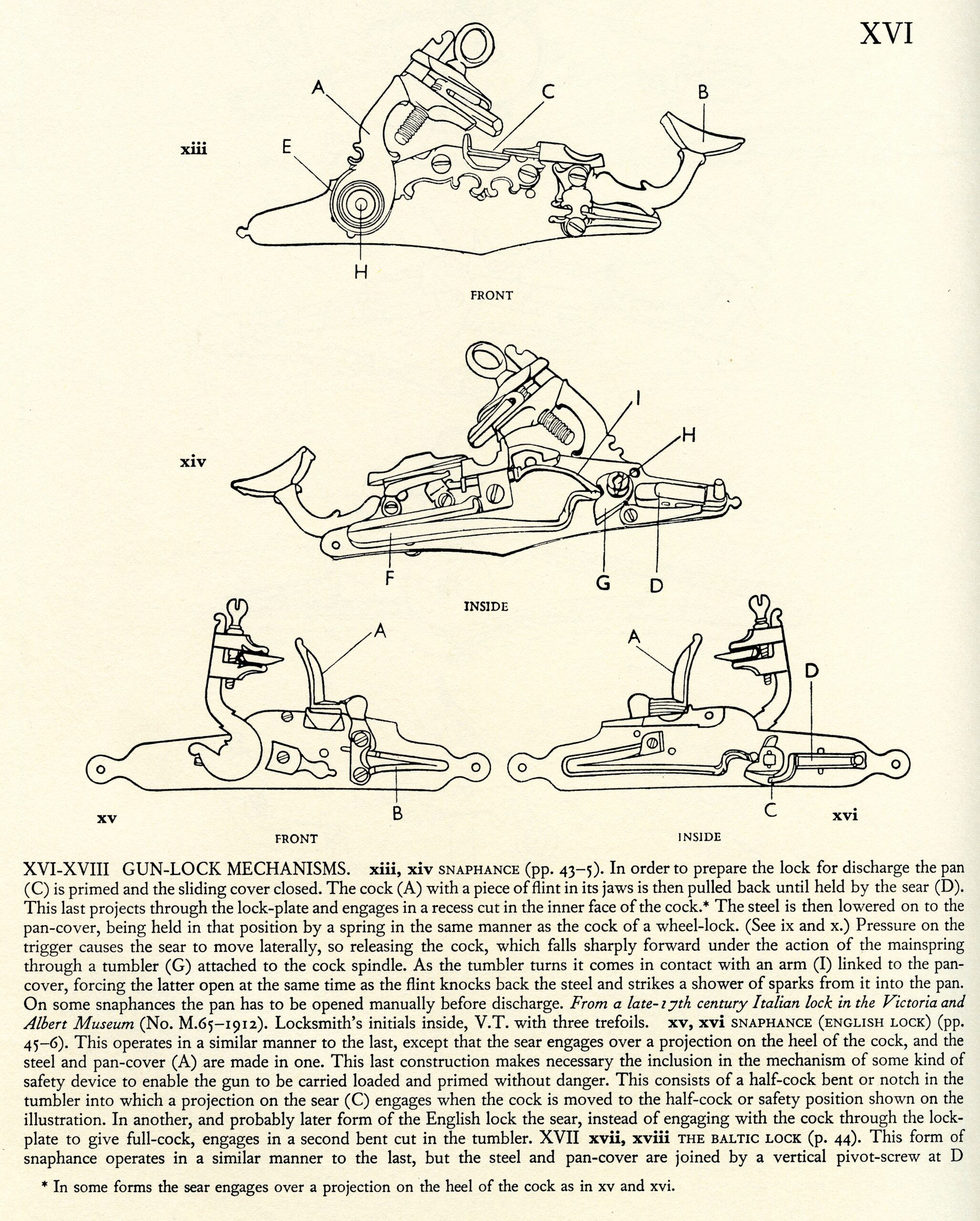
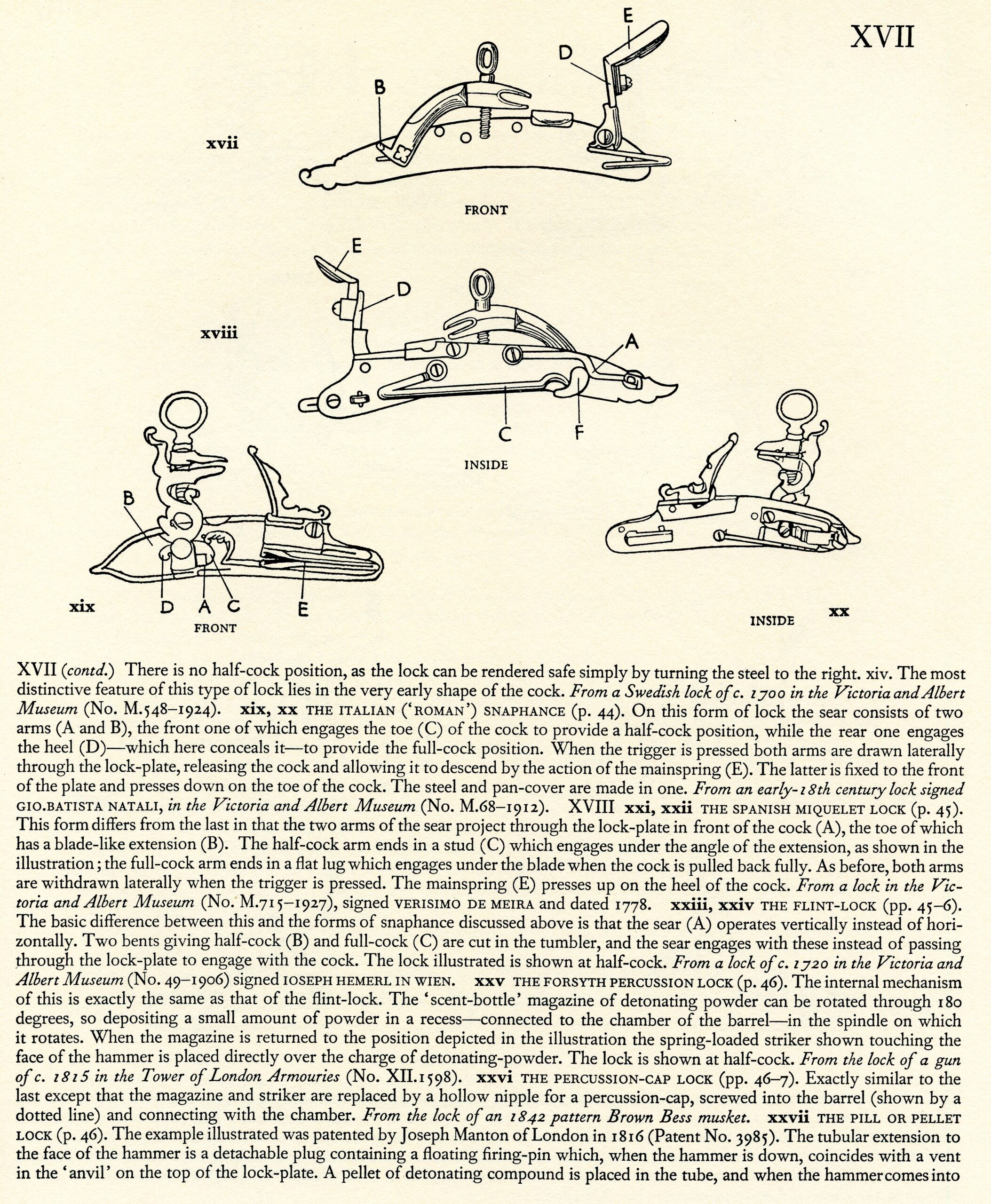
The Snaphaunce survived the longest in Sweden where it remained in use into the percussion period and until the cartridge era gained a foothold there. The images that follow are of a Swedish Snaphaunce which probably dates to the second quarter of the 19th Century. The lock is of the basic three piece construction with hand forged parts. The butt stock is short having simply a cheek rest with no butt plate which is reminiscent of the earlier Match Lock and Wheel Lock guns.


